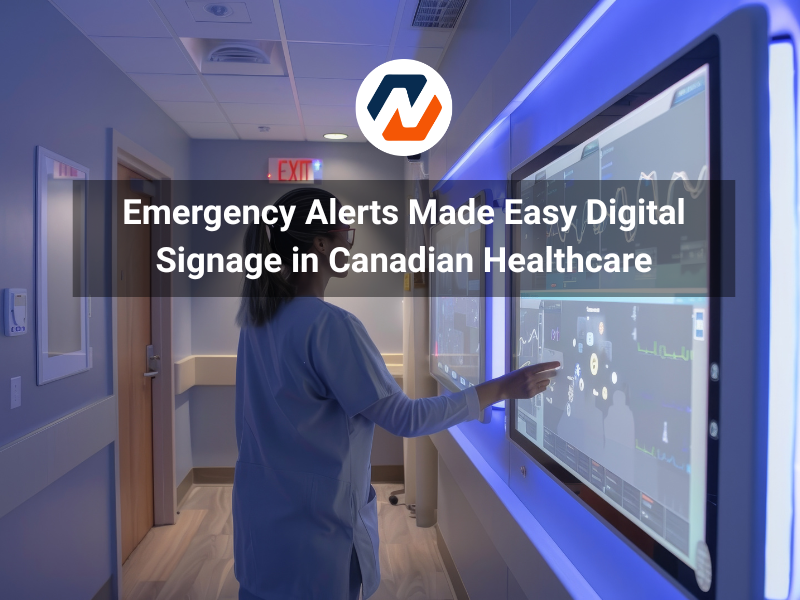Posted by: admin
Post Date: September 30, 2025
admin2025-10-06T19:12:31+00:00
Table of Contents
ToggleIntroduction – Why Emergency Communication Matters
In emergencies, every second counts. Hospitals and clinics must alert patients, visitors, and staff quickly. Traditional PA systems and posters often fail in chaotic situations.
Digital signage is now being used in Canadian healthcare to broadcast instant emergency alerts, from fire alarms to COVID-19 updates.
The Problem – Slow, Inconsistent Alerts
- PA systems not always heard in crowded hospitals.
- Paper notices too slow for fast-changing emergencies.
- Staff delays in spreading information.
The Solution – Real-Time Emergency Digital Signage
Hospitals integrate signage with alert systems and security protocols. With one trigger, messages display instantly across all screens.
Examples of Alerts:
- Fire evacuations
- Code blue/amber alerts
- Pandemic health updates
- Security lockdowns
The Impact – Faster, Safer Response
- 27% faster emergency communication in Ontario hospitals using signage (Canadian Health Tech Journal, 2024).
- 18% quicker staff response times during drills.
- Higher patient safety scores in surveys.
Integration with Healthcare Systems
- Linked with nurse call systems.
- Works with building security & fire alarms.
- Supports multilingual emergency messaging.
Case Example – Ottawa Hospital
When signage was integrated with the emergency alert system:
- Staff response time improved by 19%.
- Patients and visitors evacuated faster and safer.
Conclusion – Why Hospitals Need Digital Emergency Signage
Digital signage is more than communication — it’s a life-saving tool. By speeding up alerts, hospitals protect patients, visitors, and staff during emergencies.

